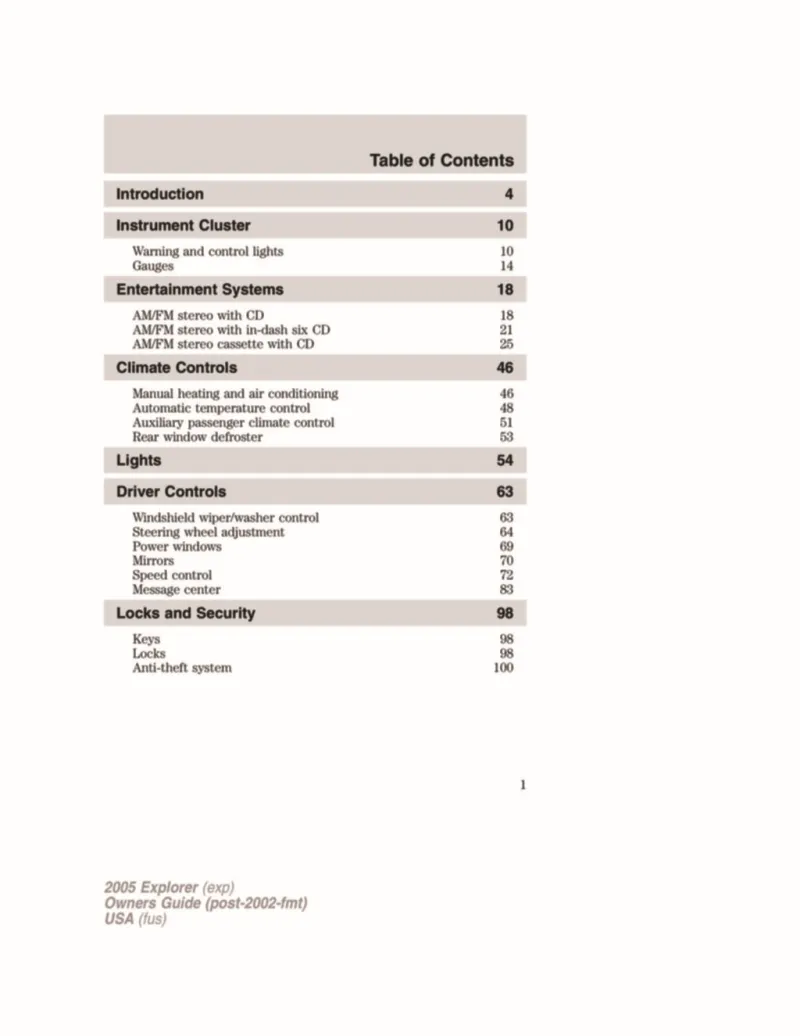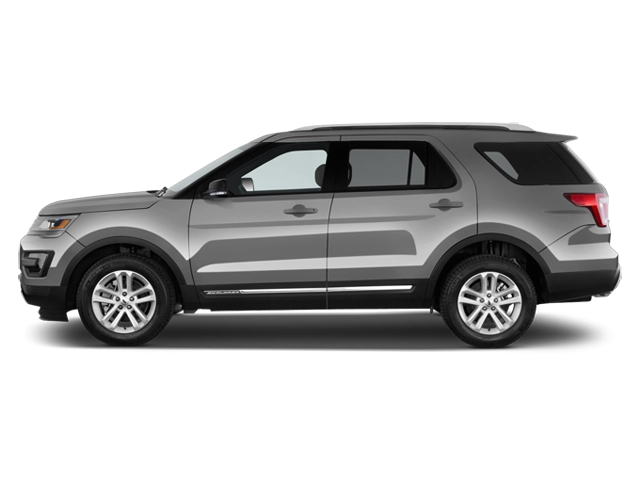2005 Ford Explorer Owner's Manual

Table of Contents
2005 Ford Explorer Overview
Introduction
The 2005 Ford Explorer is a quintessential American SUV, embodying strength, versatility, and comfort for families and adventure seekers alike. With a reputation that has stood the test of time, the Explorer offers a blend of rugged capability and refined amenities, making it an ideal choice for both urban driving and off-road escapades. The 2005 model continues to build on Ford's legacy of reliability, style, and performance in the competitive SUV market.
Powertrains
The 2005 Explorer boasts two powerful engine options that cater to varying performance needs. The standard 4.0-liter V6 engine delivers a robust 210 horsepower, offering a balanced blend of power for daily commuting and weekend outings. For those seeking a bit more muscle, the available 4.6-liter V8 engine produces 292 horsepower, providing enhanced towing capacity and off-road capability. Both engines are paired with a five-speed automatic transmission, ensuring a smooth and responsive driving experience.
Trims
This model comes in four distinct trims: XLS, XLT, Eddie Bauer, and Limited. The XLS serves as the base model, while the XLT elevates comfort with additional features such as upgraded audio systems and alloy wheels. The Eddie Bauer trim offers an upscale experience with leather upholstery and unique styling accents, while the Limited trim epitomizes luxury with advanced technology features, a premium sound system, and enhanced safety options.
Features
The 2005 Explorer is packed with a plethora of features aimed at enhancing driver and passenger experience. Standard offerings include air conditioning, power windows, and keyless entry. Higher trims offer advanced features such as a navigation system, leather seating, dual-zone climate control, and a premium audio system. Safety is also prioritized, with standard features like anti-lock brakes, front airbags, and available stability control.
Owner's Manual
The owner's manual for the 2005 Ford Explorer is a comprehensive guide that provides essential information about the vehicle's operation, maintenance, and safety features. It offers detailed instructions on care and troubleshooting, ensuring owners can maximize the performance and longevity of their SUV. Key topics include recommended service schedules, tire maintenance, and usage of the audio and navigation systems, making it an invaluable resource for any Explorer owner.
User manual download
The Ford Explorer owner manual for the 2005 model year is to be found in PDF downloadable format on this page. The owner manual for the model year 2005 is free and in English, but the repair manuals are usually not easy to get and may cost more.
Manual Questions
Fill the form below and someone will help you!

